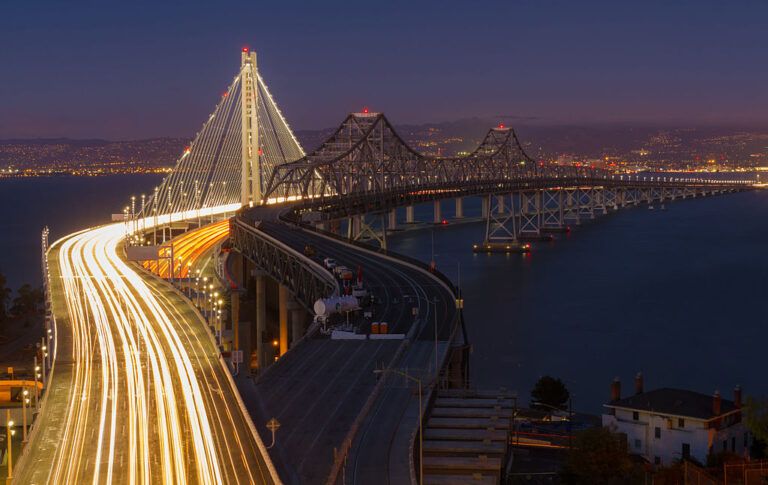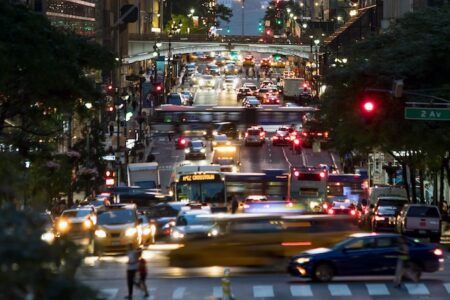The Covid-19 pandemic has forced users of toll bridges in the Bay Area of San Francisco to embrace electronic toll collection (ETC) like never before – as it is no longer possible to pay by cash.
With cash toll collection at the Bay Area’s seven state-owned toll bridges suspended since March, MTC and the Bay Area Toll Authority (BATA) invite drivers who have received a toll notice to use the toll payment page on the Bay Area FasTrak website.
Toll bridge patrons need only enter the number on the toll notice and their license plate information to pay for crossings of the Antioch, Benicia-Martinez, Carquinez, Dumbarton, Richmond-San Rafael, San Francisco-Oakland Bay (above) or San Mateo-Hayward bridges. The same option is available to drivers who cross the Golden Gate Bridge (below), which adopted all-electronic tolling in 2013.

More than 70% of all customers at the seven state-owned toll bridges already use a FasTrak toll tag or license plate account to pay their tolls electronically. These patrons have experienced no change in toll collection procedures or any difference in their statements.
Customers who ordinarily would stop at a toll booth to pay cash now continue through the toll plaza without stopping. Automated, high-speed cameras capture images of customers’ license plates. The FasTrak customer service centre processes these images and then mails a toll notice to the address at which the vehicle is registered with the DMV.
While initial notices include a heading that reads “Notice of Toll Evasion,” these transactions are not considered toll evasion violations and the amount due on each notice is for the toll amount only.
Drivers who have more than one unpaid bridge crossing and have received multiple notices can enter just a single notice number to review all unpaid crossings and to settle their unpaid tolls.





